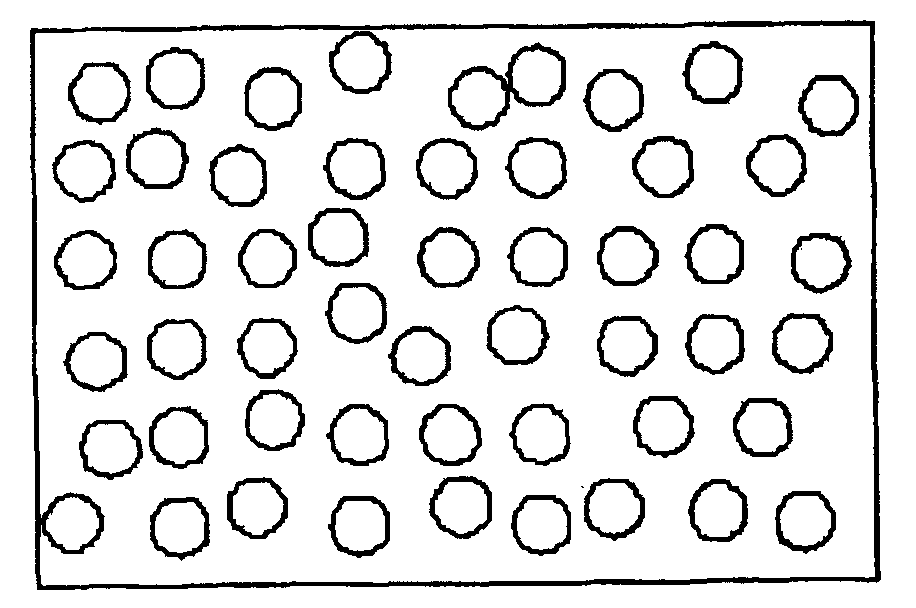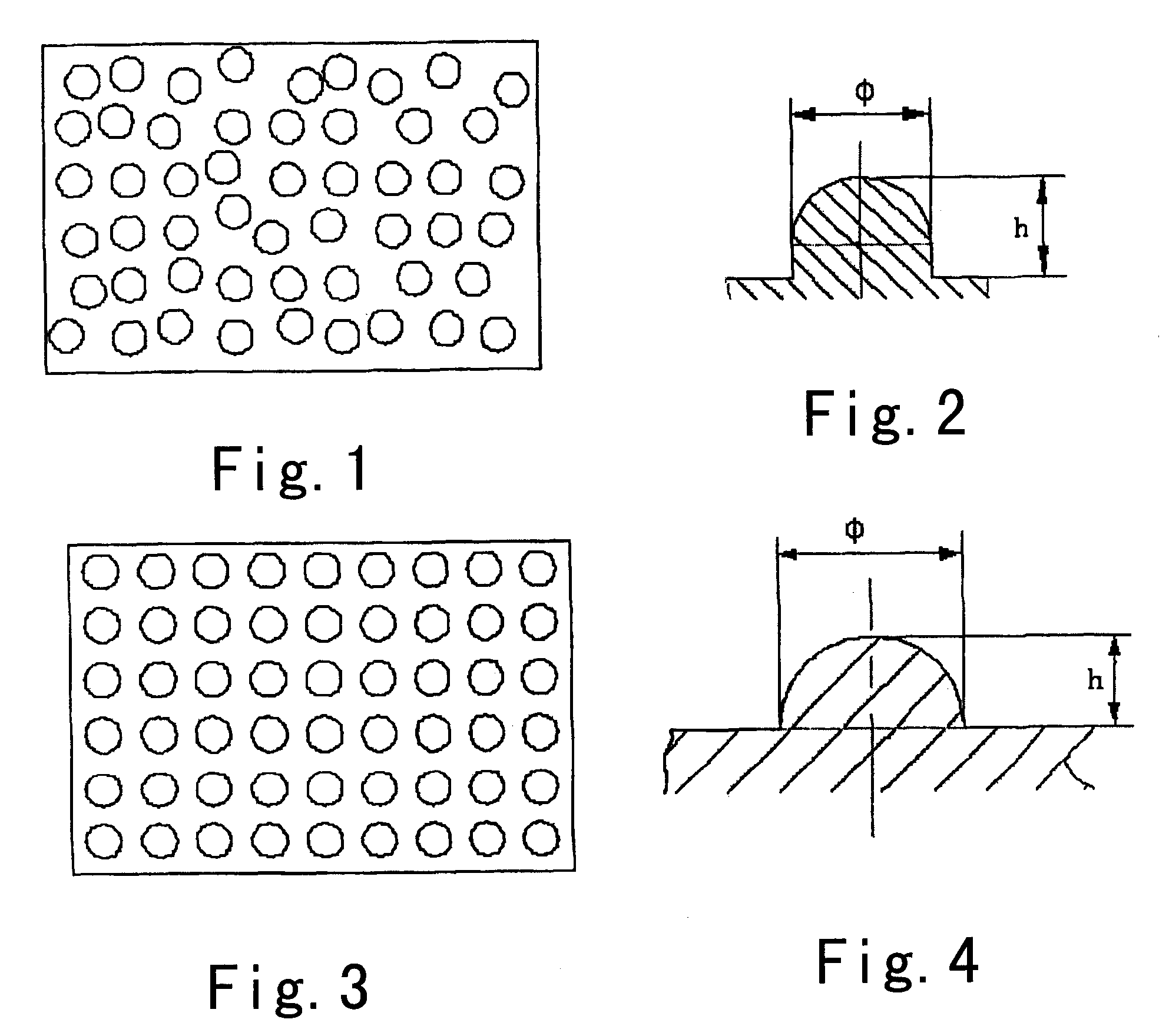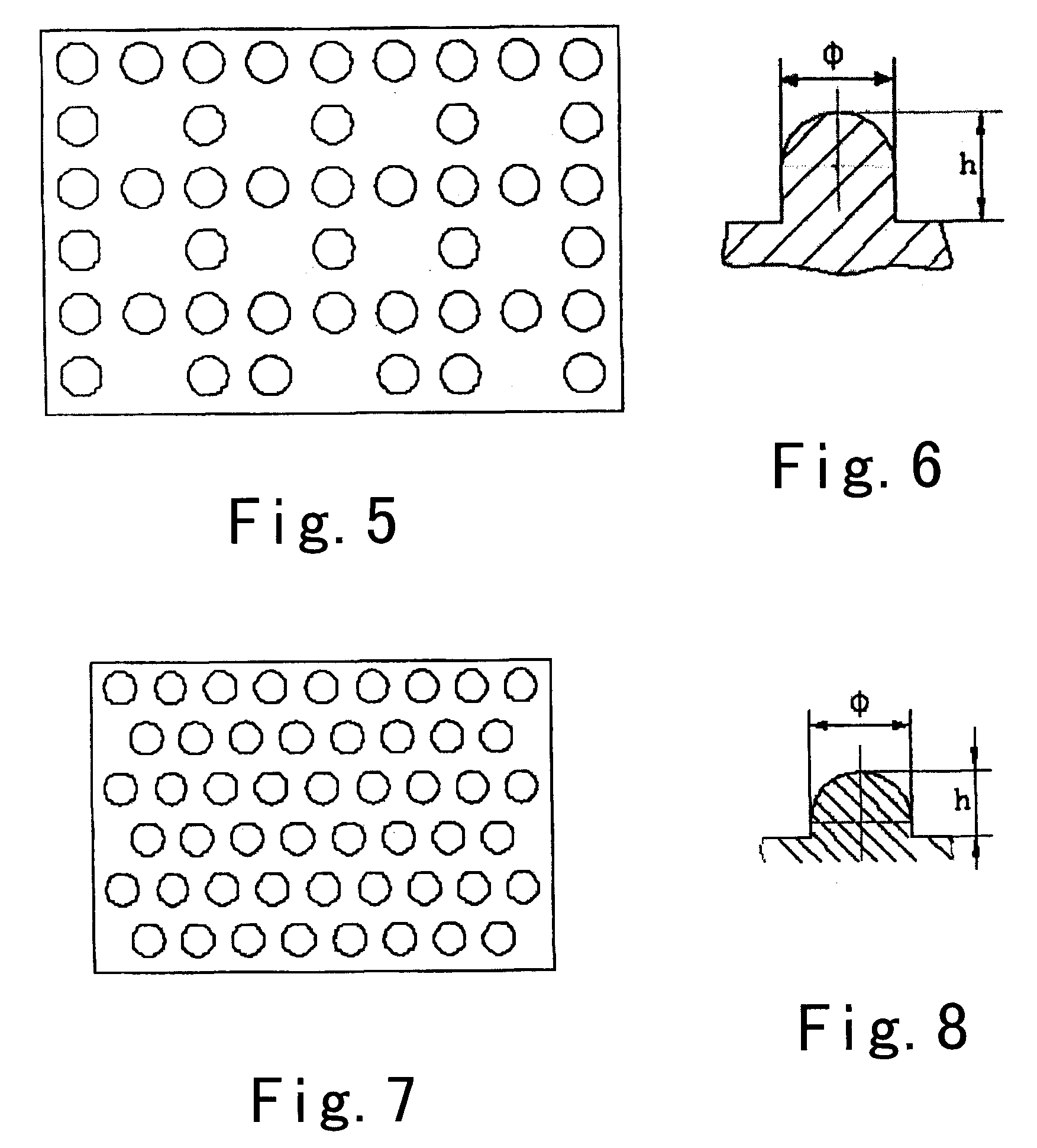Non-Stick Cooking Utensil
a technology of non-stick cooking utensils and cooking utensils, which is applied in the field of cooking utensils, can solve the problems of ptfe (e, utensils) affecting human health, people begin to worry about the security of non-stick coats, etc., and achieves the effects of improving detachability and eroding resistance, simple processing, and improving stickiness and stickiness
- Summary
- Abstract
- Description
- Claims
- Application Information
AI Technical Summary
Benefits of technology
Problems solved by technology
Method used
Image
Examples
embodiment 1
[0027]As shown in FIGS. 1 and 2, take the material of the non-stick pan (hereinafter referred to as a non-stick cooking utensil) as aluminum. On the inner wall surfaces of the non-stick cooking utensil are convex units, whose appearance looks like a spherical crown. The bottom circle diameter of the spherical crown is 800 μm (the projection area on the inner wall surface is 502400 μm2) and the height h thereof is 100 μm. The ratio of the total geometrical projection area of the convex units on the base body surface to the area of the base body surface, i.e., the distribution density of the convex units, is 60%. The convex units are distributed at random on the inner wall surface. An oxidized film can be formed on the inner wall surfaces of the cooking utensil. As compared with a cooking utensil formed by the same material but with a smooth surface, the sticking intensity and stickiness between food and the inner wall surfaces can be reduced by about 78%.
embodiment 2
[0028]As shown in FIGS. 3 and 4, take the material of the non-stick cooking utensil as steel. On the inner wall surfaces of the cooking utensil are convex units, whose appearance looks like a spherical crown. The bottom circle diameter of the spherical crown is 800 μm and the height h thereof is 400 μm. The ratio of the total geometrical projection area of the convex units on the base body surface to the area of the base body surface, i.e., the distribution density of the convex units, is 60%. The convex units are regularly distributed in the form of grid. A metallic titanium film can be formed on the inner wall surfaces of the cooking utensil. As compared with a cooking utensil formed by the same material but with a smooth surface, the sticking intensity and stickiness between food and the inner wall surfaces can be reduced by about 62%.
embodiment 3
[0029]As shown in FIGS. 5 and 6, take the material of the non-stick cooking utensil as aluminum. On the inner wall surfaces of the cooking utensil are convex units, whose appearance looks like a spherical crown. The bottom circle diameter of the spherical crown is 500 μm and the height h thereof is 100 μm. The ratio of the total geometrical projection area of the convex units on the base body surface to the area of the base body surface, i.e., the distribution density of the convex units, is 50%. The convex units are distributed at random. An oxidized film can be formed on the inner wall surfaces of the cooking utensil. As compared with a cooking utensil formed by the same material but with a smooth surface, the sticking intensity and stickiness between food and the inner wall surfaces can be reduced by about 67%.
PUM
| Property | Measurement | Unit |
|---|---|---|
| height | aaaaa | aaaaa |
| circle diameter | aaaaa | aaaaa |
| diameter | aaaaa | aaaaa |
Abstract
Description
Claims
Application Information
 Login to View More
Login to View More - R&D
- Intellectual Property
- Life Sciences
- Materials
- Tech Scout
- Unparalleled Data Quality
- Higher Quality Content
- 60% Fewer Hallucinations
Browse by: Latest US Patents, China's latest patents, Technical Efficacy Thesaurus, Application Domain, Technology Topic, Popular Technical Reports.
© 2025 PatSnap. All rights reserved.Legal|Privacy policy|Modern Slavery Act Transparency Statement|Sitemap|About US| Contact US: help@patsnap.com



